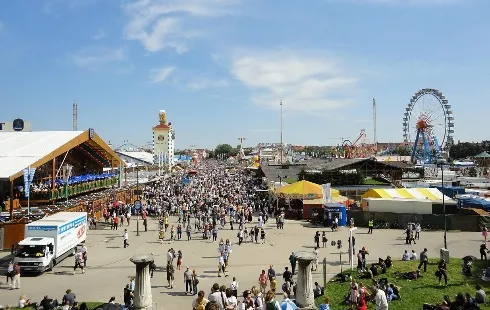
Ukrainian Diplomat Calls for Stronger Security Commitments Beyond NATO-Style Guarantees
Section: Politics
 In recent months, phrases like "Tourists go home!" and "Your paradise, our hell!" have appeared on walls and buildings across South Tenerife, welcoming visitors to the region, many of whom are British, for a week of relaxation under the sun. International media has portrayed this graffiti as indicative of a widespread surge in anti-tourism sentiment among the Canarian population. However, a closer examination reveals a more nuanced reality.
In recent months, phrases like "Tourists go home!" and "Your paradise, our hell!" have appeared on walls and buildings across South Tenerife, welcoming visitors to the region, many of whom are British, for a week of relaxation under the sun. International media has portrayed this graffiti as indicative of a widespread surge in anti-tourism sentiment among the Canarian population. However, a closer examination reveals a more nuanced reality.
Contrary to the impression given by the graffiti, the anti-tourism sentiment is not pervasive across the entire population of the Canary Islands. Rather, it is the vocal outcry of a minority dissatisfied with the current state of tourism and its impact on the islands. The reality is that tourism plays a vital role in the economy of the Canaries, contributing 20.3 billion euros last year, which accounts for 35% of the region's GDP. A sudden halt to tourism would likely plunge the islands into economic turmoil, leaving over half of the workforce unemployed.
Nevertheless, there is legitimate discontent among residents regarding the imbalance between tourism and the needs of the local population. This discontent has culminated in planned mass demonstrations on April 20 across five of the eight Canary Islands, organized under the banner of "The Canary Islands have a limit." These protests seek to urge the government to implement a more sustainable tourism model that benefits both residents and the environment.
One of the primary concerns driving this discontent is the strain that mass tourism places on local resources and infrastructure. Water shortages, the deterioration of natural spaces, traffic congestion, and the overpricing of long-term apartment rentals are among the issues exacerbating tensions between residents and the tourism industry. The "Airbnb effect" further compounds these problems by driving up housing costs and contributing to a critical shortage of affordable accommodation for local workers.
Despite record-high tourism revenue, many residents of the Canary Islands continue to struggle financially. With 36% of Canarians at risk of poverty and the lowest average wage in Spain, the economic benefits of tourism have not been equally distributed. Workers in the hotel and catering sector, in particular, face low wages and limited access to affordable housing in tourist areas.
While the local government acknowledges these concerns, finding solutions that address the needs of residents without sacrificing tourist revenue remains a challenge. Proposed measures include limiting short-term property rentals, increasing wages, and introducing entry fees for protected natural areas. However, whether these measures will be sufficient to alleviate resident discontent remains to be seen.
Despite the unrest, it's essential to recognize that the grievances are directed at the government and the tourism industry, not individual tourists. Residents of the Canary Islands value and appreciate tourists for the economic benefits they bring to the region. However, they also seek a fair distribution of these benefits and recognition of the challenges they face as a result of living in a popular tourist destination.
In conclusion, while slogans of anti-tourism graffiti may grab headlines, they do not reflect the entirety of the sentiment in South Tenerife. The issues underlying resident discontent are complex and multifaceted, driven by concerns about sustainability, economic inequality, and the impact of mass tourism on local communities. By understanding and addressing these concerns, the Canary Islands can work towards a more equitable and sustainable tourism model that benefits both residents and visitors alike.

Section: Politics

Section: News

Section: News

Section: News

Section: Arts

Section: News

Section: News

Section: News

Section: News

Section: News

Health Insurance in Germany is compulsory and sometimes complicated, not to mention expensive. As an expat, you are required to navigate this landscape within weeks of arriving, so check our FAQ on PKV. For our guide on resources and access to agents who can give you a competitive quote, try our PKV Cost comparison tool.

Germany is famous for its medical expertise and extensive number of hospitals and clinics. See this comprehensive directory of hospitals and clinics across the country, complete with links to their websites, addresses, contact info, and specializations/services.

Join us at the Kunstraum in der Au for the exhibition titled ,,Ereignis: Erzählung" by Christoph Scheuerecker, focusing on the captivating world of bees. This exhibition invites visitors to explore the intricate relationship between bees and their environment through various artistic expressions,...
No comments yet. Be the first to comment!